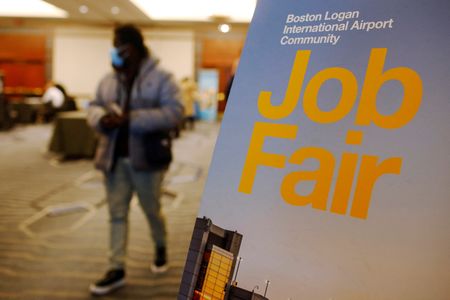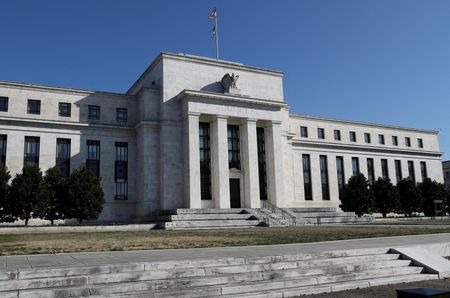



By Lucia Mutikani
WASHINGTON (Reuters) – U.S. job growth increased more than expected in June and the unemployment rate remained near pre-pandemic lows, signs of persistent labor market strength that give the Federal Reserve ammunition to deliver another 75-basis-point interest rate increase later this month.
Nonfarm payrolls increased by 372,000 jobs last month, the Labor Department’s closely watched employment report showed on Friday. Data for May was revised slightly down to show payrolls rising by 384,000 jobs instead of the previously reported 390,000.
Economists polled by Reuters had forecast 268,000 jobs added last month. Estimates ranged from as low as 90,000 to as high 400,000.
June’s larger-than-expected employment gains pushed the economy closer to recouping all the jobs lost during the pandemic. The unemployment rate was unchanged at 3.6% for a fourth straight month. This is inconsistent with an economy that is on the verge of a recession.
Most industries with the exception of leisure and hospitality, manufacturing, healthcare, wholesale trade and local government education have recovered all the jobs lost during the pandemic.
Some of the slowdown in payrolls last month reflected issues with the seasonal factors, the model that the government uses to strip out seasonal fluctuation from the data, following the upheaval caused by the pandemic.
Unadjusted payrolls increased by the most on record in June 2020 as the economy emerged from the first wave of COVID-19.
Though this feat is unlikely to be repeated, the seasonal factor could still be anticipating large payroll gains in June, which ultimately lowers the seasonally adjusted number.
While demand for labor is cooling in the interest rate-sensitive goods-producing sector of the economy, businesses in the vast services industry are scrambling for workers. There were 11.3 million job openings at the end of May, with 1.9 jobs for every unemployed person.
The Fed wants to cool demand for labor to help bring inflation down to its 2% target.
The U.S. central bank’s aggressive monetary policy posture has heightened recession worries, which were amplified by modest growth in consumer spending in May as well as soft housing starts, building permits and manufacturing production.
In June, it raised its benchmark overnight interest rate by three-quarters of a percentage point, its biggest hike since 1994. Markets overwhelmingly expect the Fed, which has increased its policy rate by 150 basis points since March, to unveil another 75-basis-point hike at its meeting later this month.
The release next Wednesday of inflation data for June, which is expected to show consumer prices accelerating, is also seen giving policymakers another reason to raise borrowing costs further.
Employers continued to raise wages at a steady clip last month. Average hourly earnings increased 0.3% in June after gaining 0.4% in May. That lowered the year-on-year increase to 5.1% from 5.3% in May. Despite the deceleration, wage pressures remain robust. Labor costs surged in the first quarter and the Atlanta Fed’s wage growth tracker continues to run strong.
(Reporting by Lucia Mutikani; Editing by Paul Simao and Chizu Nomiyama)

